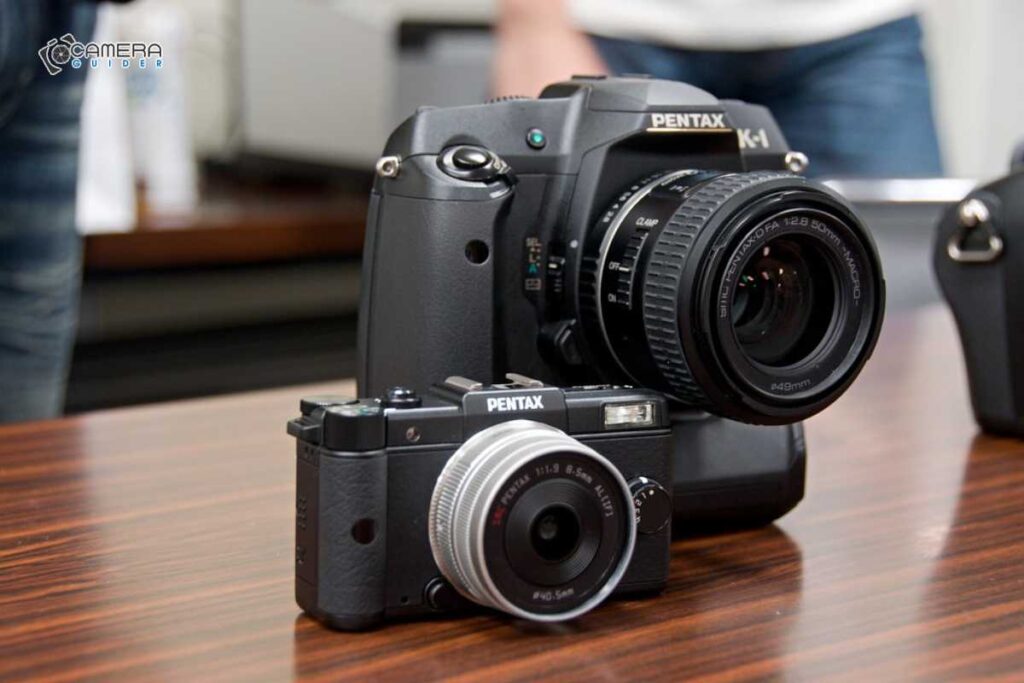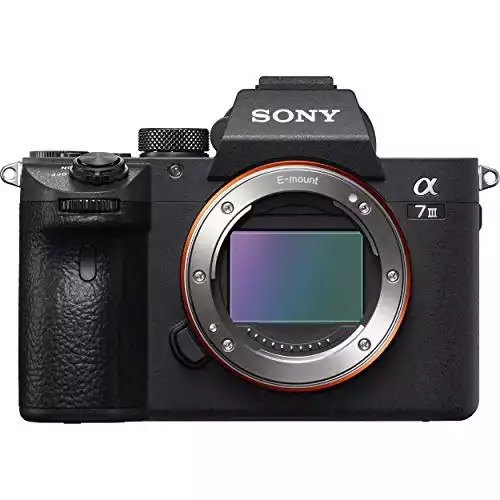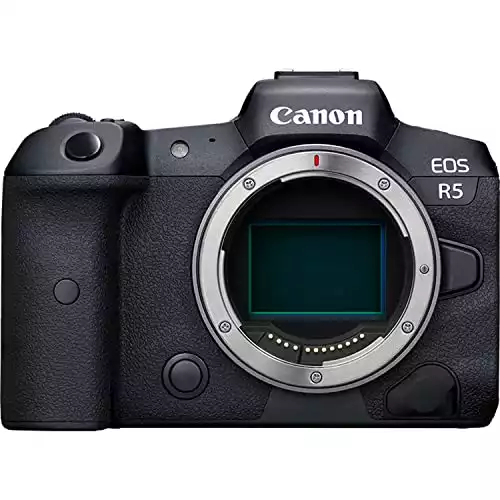A seasoned photographer would be pretty familiar with this topic, but full frame DSLR vs Mirrorless cameras tend to have diverse, yet noticeable, aspects that can leave some new photographers a bit lost in deciding what is best for them. It’s kind of like the macro vs. wide-angle lens conundrum.
The commonality between these two types of cameras is the sensor size, around 35mm. Also known as a full-frame sensor.
Don’t worry! I’ll explain the differences between a full-frame DSLR and a Mirrorless camera in a detailed way so you can identify them.

Additional Reading: Mirrorless or DSLR For Filmmaking
What are the differences between Full Frame DSLR vs Mirrorless Cameras?
DSLRs use a reflex mirror to direct light from the lens to the viewfinder, while mirrorless cameras do not. This is why DSLRs tend to be larger and heavier – they need that mirror mechanism.
In addition, DSLRs typically have a pentaprism optical viewfinder which gives you a 100% field of view. In comparison, most mirrorless cameras have an electronic viewfinder that can only show around 97% of the scene.
Finally, DSLRs usually have more focus points (up to 61 vs. 49 on some Mirrorless cameras) and offer faster burst shooting rates (up to 8fps vs. 6fps on some models).
Let’s dive in:
Full-frame vs. Crop-sensor
A quick recap of the differences between the two types of sensors: A full-frame camera sensor has a size of 36x24mm, while crop-frame sensors are smaller with a size of around 22.5x15mm.
This is because the crop-frame sensor is cropped from the center of the full-frame sensor. This results in a loss of resolution and image quality.
Additionally, the crop-frame sensor typically requires specifically designed lenses, while full-frame lenses can be used on both types of sensors. In other words, a full-frame camera gives you access to a broader range of lenses you can use (but you’ll probably want to use full-frame lenses anyway)
Shutter System
On DSLR cameras, the shutter system uses a mirror to block the imaging sensor and to reflect the image through the lens into the viewfinder for you to see. When you press the shutter button, the mirror flips out of the way, allowing light to hit the camera’s full-frame sensor. This motion is often heard with a loud “clack” sound as the mirror moves in and out of position.
There is no moving mirror system on mirrorless cameras, so the shutter is an electronic curtain that moves in front of the sensor to create exposures. This makes mirrorless cameras infinitely quieter, with options to enable shutter sounds as audio confirmations of a successful picture.
Removing the mirror system makes the camera’s body much smaller and lighter. This reason alone is enough for some photographers to switch to a mirrorless setup because it’s less cumbersome to carry.
View Finder
Viewfinders on mirrorless cameras are different than viewfinders on traditional DSLR cameras.
Mirrorless cameras have an electronic viewfinder (EVF) because they lack a mirror system. This also means that the image you see in the viewfinder is slightly cropped than what will be captured in the photograph since it is projected onto the sensor rather than reflected off of a mirror.
Some photographers find this difference distracting and prefer to stick with a traditional DSLR camera. I like the EVF because I have a better idea of what the photo will look like before I take the shot, saving a lot of time constantly looking at the back of the camera at photos I don’t even want.
Flange Focal Distance (FFD)
The flange focal distance is the amount of space between the sensor and the lens mount.
The FFD is slightly shorter in the full-frame Mirrorless camera because it doesn’t have a bulky mirror between the two. Ultimately, this makes the body of the camera much smaller in comparison to that of a DSLR.
Something else that isn’t very often discussed is that a shorter FFD puts the sensor closer to the opening of the lens mount, making it more susceptible to dust when switching lenses outdoors. Most cameras can shake off loose particles, but you might reach in a bit more on a mirrorless camera to clean off the more stubborn specks.
Battery Capacity
At the end of the day, bigger cameras can afford to house bigger batteries. The bigger the battery, the longer you’ll be able to last on a single charge.
Most basic DSLRs can support up to 600 shots with a full battery. The bigger, higher-end DSLRs (like the Nikon D6) can take upwards of 3,500 photos on a single battery! That’s incredible battery life and eliminates any fear of running out of juice while away from a power source.
On the other hand, Mirrorless cameras have a couple of things going against them in being able to last as long. First, they are far more dependent on power with live-view shooting from either the electronic viewfinder or the display, something DSLRs can economize quite a bit on.
Pros & Cons
DSLRs
| Pros | Cons |
|---|---|
| Longer battery life | Really big, bulky, form factor |
| More lens options | Heavy to carry around |
| Decades of experience (tried and true) | Two different focusing systems |
Mirrorless
| Pros | Cons |
|---|---|
| More compact, smaller form factor | Shorter battery life |
| Electronic viewfinder; can see more information | More prone to dust on the sensor |
| Single focusing system | Fewer lens options |
| Quieter operation | Still room for improvement |
Conclusion
Technological advancements for DSLRs and Mirrorless cameras are becoming more and more of an equal match when comparing specific features or functions.
If you need a camera with solid battery life and less prone to sensor dust, look no further than the full-frame DSLR. These cameras have lots and lots of history, making them a good bet if you’re still unsure.
However, if you need a quiet, lightweight camera that can easily travel around, you should opt for a full-frame mirrorless camera.




